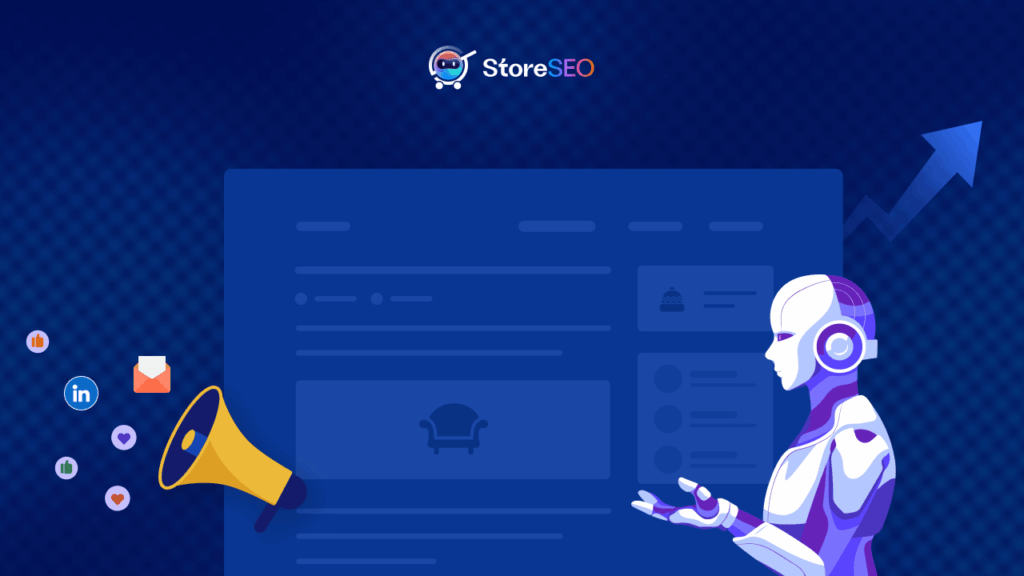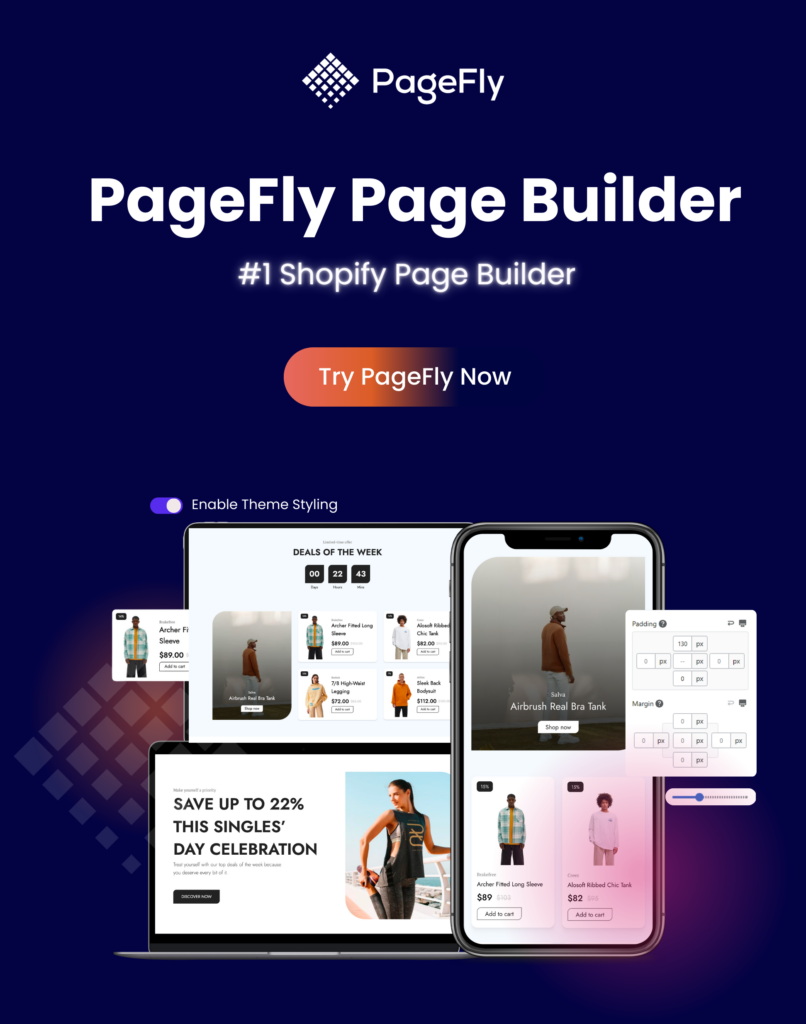Shopify on-page SEO involves optimizing your online store’s elements to enhance its visibility in search engine results. This includes using relevant keywords in titles, descriptions, and URLs, structuring content with headings, optimizing images, creating quality content, internal linking, ensuring mobile-friendliness, implementing schema markup, and optimizing page speed. These efforts improve your store’s chances of ranking higher in search results, driving more organic traffic and potential customers to your Shopify store.

How Shopify On-Page SEO Works?
To boost your website’s ranking, optimizing individual web pages is crucial. On-page SEO involves refining web pages to improve their ranking and attract more traffic through search engines. It entails optimizing both content and HTML source code of specific pages, contrasting with off-page optimization. On-page SEO empowers you to transform research into compelling content for your intended audience. However, it is essential to avoid low-value tactics that could potentially do more harm than good.
On-page SEO functions by strategically optimizing various elements of a web page to improve its visibility and relevance to search engines. This optimization process typically involves:
- Keyword Research: Identifying relevant keywords that your target audience is likely to search for.
- Content Optimization: Incorporating these keywords naturally into the page’s content, headings, meta tags, and URLs while ensuring the content remains high-quality, informative, and engaging.
- HTML Source Code Optimization: Optimizing HTML elements such as title tags, meta descriptions, heading tags, and image alt attributes to accurately reflect the page’s content and targeted keywords.
- Internal Linking: Linking related pages within your website to improve navigation and distribute link equity throughout your site.
- Mobile Optimization: Ensuring that the web page is mobile-friendly and loads quickly on mobile devices, as mobile-friendliness is a significant ranking factor for search engines.
- User Experience (UX) Optimization: Enhancing the overall user experience by organizing content logically, improving readability, and minimizing intrusive elements like pop-ups or interstitials.
- Schema Markup: Implementing schema markup to provide search engines with additional context about the page’s content, such as product information, reviews, or event details.
- Regular Monitoring and Adjustments: Monitoring the performance of optimized pages using analytics tools and making adjustments as needed to improve rankings and user engagement.
By implementing these on-page SEO techniques, webmasters aim to improve a page’s visibility, relevance, and ultimately its ranking on search engine results pages (SERPs), leading to increased organic traffic and potential conversions.
Enhance Your Shopify On-Page SEO with Easy Steps
By implementing these on-page SEO techniques, webmasters aim to improve a page’s visibility, relevance, and ultimately its ranking on search engine results pages (SERPs), leading to increased organic traffic and potential conversions.
Keyword Research
Begin by conducting thorough keyword research to identify the terms and phrases your target audience is using to search for products or services similar to what you offer. Utilize tools such as Google Keyword Planner, SEMrush, or Ahrefs to explore relevant keywords. Consider the search volume, competition level, and user intent behind each keyword to choose the most strategic ones for your Shopify store.

Optimize Product Titles And Descriptions
Once you’ve identified your target keywords, strategically incorporate them into your product titles and descriptions. Craft descriptive and compelling titles that not only include your primary keywords but also entice users to click through to your product pages. Similarly, ensure that your product descriptions are informative, engaging, and keyword-rich, providing potential customers with valuable information about your products.

Create SEO-Friendly URLs
Optimize your product URLs by ensuring they are clean, concise, and keyword-rich. Incorporate relevant keywords into your URLs to provide both users and search engines with a clear understanding of the content of each page. Use hyphens to separate words and avoid including unnecessary characters or numbers that could confuse visitors or dilute the effectiveness of your URLs.
Optimize Image Alt Text
Improve the search engine visibility of your product images by adding descriptive alt text that includes relevant keywords. Alt text not only helps visually impaired users understand the content of your images but also provides search engines with valuable context about the subject matter of each image. Be descriptive yet concise in your alt text, accurately reflecting the content and purpose of each image.

Write Compelling Meta Tags
Craft persuasive meta titles and descriptions for each of your product pages, incorporating your target keywords while adhering to the character limits imposed by search engines. Your meta titles should succinctly summarize the content of each page, enticing users to click through to learn more. Likewise, your meta descriptions should provide a compelling overview of your products, highlighting their key features and benefits to potential customers.
Enhance Page Content
Create high-quality, informative, and engaging content for your product descriptions, collections, and other pages within your Shopify store. Focus on addressing the needs and interests of your target audience, using your chosen keywords naturally throughout your content. Strive to provide valuable information that educates and empowers users, helping them make informed purchasing decisions.
Implement Internal Linking
Boost the discoverability and accessibility of your Shopify store’s content by implementing internal linking strategies. Link related product pages, collections, and blog posts within your site to create a logical and intuitive navigation structure. Internal links not only facilitate user engagement and exploration but also help search engines crawl and index your content more effectively, potentially improving your site’s overall visibility, ranking, and Shopify On-page SEO.
Optimize Page Load Speed
Optimize the performance of your Shopify store by prioritizing page load speed, a crucial factor that can impact user experience, search engine rankings, and Shopify On-page SEO. Improve load times by optimizing image sizes, minimizing the use of unnecessary CSS and JavaScript files, and leveraging browser caching techniques. Consider implementing a content delivery network (CDN) to distribute your content more efficiently and reduce latency for users across different geographic locations.

Ensure SEO Mobile-Friendliness
It’s essential to ensure that your Shopify store is fully optimized for mobile devices. Implement responsive design principles to create a seamless and intuitive browsing experience for mobile users. Test your site’s mobile compatibility across various devices and screen sizes, addressing any usability issues or design inconsistencies that may arise. Prioritize mobile-friendliness not only to enhance user satisfaction but also to maintain or improve your search engine rankings, as mobile optimization is a key ranking factor for search engines like Google.
Monitor Shopify On-Page SEO Performance and Make Adjustments
Continuously monitor the performance of your optimized pages using tools such as Google Analytics or Shopify’s built-in analytics features. Track key metrics such as organic traffic, keyword rankings, bounce rates, and conversion rates to evaluate the effectiveness of your on-page SEO efforts. Identify areas for improvement or optimization based on your data analysis, making informed adjustments to your SEO strategy as needed. By regularly monitoring and refining your approach, you can ensure that your Shopify store remains competitive and visible in search engine results, driving sustained organic traffic and conversions over time.
Optimize Shopify Store by Mastering On-Page SEO
In conclusion, mastering Shopify on-page SEO is crucial for improving your website’s visibility and attracting more organic traffic from search engines. By optimizing elements such as keywords, content, URLs, and meta tags, you can enhance your site’s relevance and ranking in search results. Additionally, focusing on factors like mobile-friendliness, page speed, and user experience ensures that your website meets the evolving needs of both users and search engines. With a strategic approach to on-page SEO and ongoing monitoring of performance, you can effectively boost your online presence and achieve your business goals.
Feel free to share your feedback in the comments section and share it with your friends. Subscribe to our blog and join our Facebook Community for more updates.








